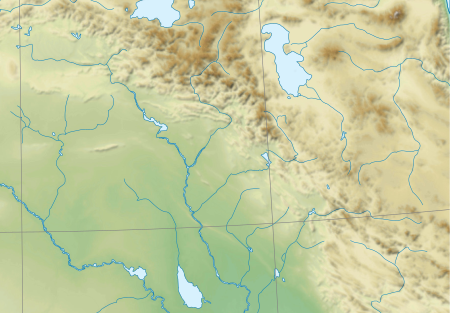Jewish Neo-Aramaic dialect of Zakho
This article needs additional citations for verification. (September 2019) |
| Lishana Deni | |
|---|---|
| לשנא דני Lišānā Denī | |
| Pronunciation | [liˈʃɑnɑ ˈdɛni] |
| Native to | Israel, Iraq |
| Region | Zakho, Iraq |
Afro-Asiatic
| |
| Language codes | |
| ISO 639-3 | lsd |
| Glottolog | lish1247 |
| ELP | Lishana Deni |
The Jewish Neo-Aramaic dialect of Zakho[1][2][3] is a dialect of Northeastern Neo-Aramaic originally spoken by Jews in Zakho, Iraq. Following the exodus of Jews from the Muslim lands, most speakers now live in Israel, principally Jerusalem and surrounding villages.
Origins[]
Various Neo-Aramaic dialects were spoken across a wide area from the Zakho region, in the west, to Lake Urmia, in the northeast to Sanandaj, in the southeast (the area covers northern Iraq and northwestern Iran). The upheavals in their traditional region after the First World War and the founding of the State of Israel led most of the Jews of Kurdistan to move to Jerusalem and villages nearby.
However, uprooted from northern Iraq, and thrown together with so many different language groups in the fledgling nation, Lishana Deni began to be replaced in the speech of younger generations by Modern Hebrew.
All speakers are over 50 years old. Lishana Deni is written in the Hebrew alphabet. Spelling tends to be highly phonetic, and elided letters are not written.
Intelligibility[]
The language faces extinction in the next few decades. Although there is very little intelligibility between Lishana Deni and the other Jewish dialects, there is quite reasonable intelligibility between it and the Christian Neo-Aramaic dialects spoken in the region.
See also[]
- Aramaic alphabet
- Betanure Jewish Neo-Aramaic
- Jewish languages
References[]
- ^ Neuman, Yishai (2019). "Categorical Shifts of the Idiom Ribono shel(a)olam: From a Tannaitic Vocative to a Jewish Theocentric Interjection to a Substrate Component in Israeli Hebrew Discourse". Journal of Jewish Languages. 7 (2): 190–226. doi:10.1163/22134638-06011139a.
- ^ Nissan, Ephraim (2019). "Names for the fishes of the river Tigris in Baghdadi Judaeo-Arabic and in Zakho Jewish Neo-Aramaic". La linguistique. 55 (1): 97. doi:10.3917/ling.551.0097.
- ^ Nissan, E. (1 January 1999). "REVIEWS". Journal of Semitic Studies. XLIV (2): 320–322. doi:10.1093/jss/XLIV.2.320.
Bibliography[]
- Avenery, Iddo, The Aramaic Dialect of the Jews of Zakho. The Israel academy of Science and Humanities 1988.
- Heinrichs, Wolfhart (ed.) (1990). Studies in Neo-Aramaic. Scholars Press: Atlanta, Georgia. ISBN 1-55540-430-8.
- Maclean, Arthur John (1895). Grammar of the dialects of vernacular Syriac: as spoken by the Eastern Syrians of Kurdistan, north-west Persia, and the Plain of Mosul: with notices of the vernacular of the Jews of Azerbaijan and of Zakhu near Mosul. Cambridge University Press, London.
- Sabar, Yona (1975). "The impact of Israeli Hebrew on the Neo-Aramaic dialect of the Kurdish Jews of Zakho: a case of language shift". Hebrew Union College Annual (46): 489–508.
- Sabar, Yona (2002). A Jewish Neo-Aramaic Dictionary. Harrassowitz. ISBN 978-3-447-04557-5.
External links[]
- Endangered Afroasiatic languages
- Languages of Iraq
- Languages of Israel
- Jewish Northeastern Neo-Aramaic dialects
- Languages of Kurdistan
